by Wallace Wyss –
I still remember when the Corvette “aero coupe” came out in ’63, how exciting it was–a fastback coupe with wow, a split rear window. But then, as time went on I lost a little of my excitement, when I saw
a.) the side vents were fake
b.) the hood vents were fake
c.) the knock off wheels were only offered one year and then there were fake knock-off wheel hubcaps
In other words, there was a lot of fakery, like we Americans are too dumb to know a vent is fake. Plus no less an expert that Zora Arkus-Duntov, the titular father of the Corvette, said the inward slanted lower body made a lifting body of the whole car, not good for high speed.
Which is why the Corvette Rondine fascinates me. That was a Corvette done right. Few know that at the time one of Italy’s greatest coachbuilders took a whack at designing an alternate body.
That prototype, called the Rondine, was steel bodied as opposed to the fiberglass normally used since the Corvette’s conception. One of the ironies in the tale of this rare oddity is that the designer at Pininfarina who penned it was not an Italian but actually a lad born and raised in Birmingham Michigan, the same town that many GM car designers reside in. That man is Tom Tjaarda…(pronounced JAR-DUH)
I can’t find any mention of General Motors sending them a chassis but William L. Mitchell, GM’s VP in charge of Styling, was known to co-operate with European coachbuilders. He might have been curious to see what they would come up with, just as he was when Pininfarina’s rival Bertone did their own one-off take on the Corvair with the Testudo.
After keeping it for over 30 years, Pininfarina took the Rondine out of long term storage, maybe figuring their chances of getting a contract to body cars from GM was gone. In fact in recent times, they shut down manufacturing cars. The car was sold at the Barrett-Jackson auction for $1.6 million to a Connecticut collector.
But in the past, with Cadillac Broughams in the late ’50s and later with the Allante, they did in fact get the nod from GM–accompanied by sizable checks–to body some GM cars.
Corvette Rondine
The Rondine had two different roof styles, having been updated between shows. The original roof style was with an inward slanted back lite as in the 1957 Mercury Turnpike Cruiser…it may have been up-dated just because too many Americans noticed it copied the Mercury roof.
The 327 cu. in. V8-powered 4-speed manual car had a fuel-injected V8 rated at 360 horsepower.
Perhaps to save money they left the interior the same as the production Corvette except for sill plates. The car made its debut at the 1963 Paris Show where it no doubt spoiled the impact of the Corvette Stingray Europeans probably laughed at the fake side vents on the Corvette and equally non-functional hood vents–why have fake vents, they had to have asked.
I think it was politics at the time that killed the chance of GM building an Italian Vette. First of all the climate back then was: if you were selling parts to the car industry, you didn’t show up at a GM office in a non GM car. Secondly what would the 2000 designers at GM think if you assign the body styling to some guy off in Europe. Third, GM was not convinced that the Pininfarina badge on a car would move sales (though they did become convinced a few decades later when they had Pininfarina design the Allante).
And so it is, we will always wonder what different cars could have looked like if the Italians had been given a chance. Back then we Americans didn’t know what capabilities they had. But I always say, when it comes to design, Italians were designing fine clothes and furniture about the time buckskin clad Americans were fighting their way West. So they had a head start in fine design and they are always worth listening to…Capiche ?
Let us know what you think in the Comments.
THE AUTHOR: Wallace Wyss is a fine artist whose prints of his fine art will be on sale at Concorso Italiano in August in Monterey. For a list of his available art write litamakati2@gmail.com.
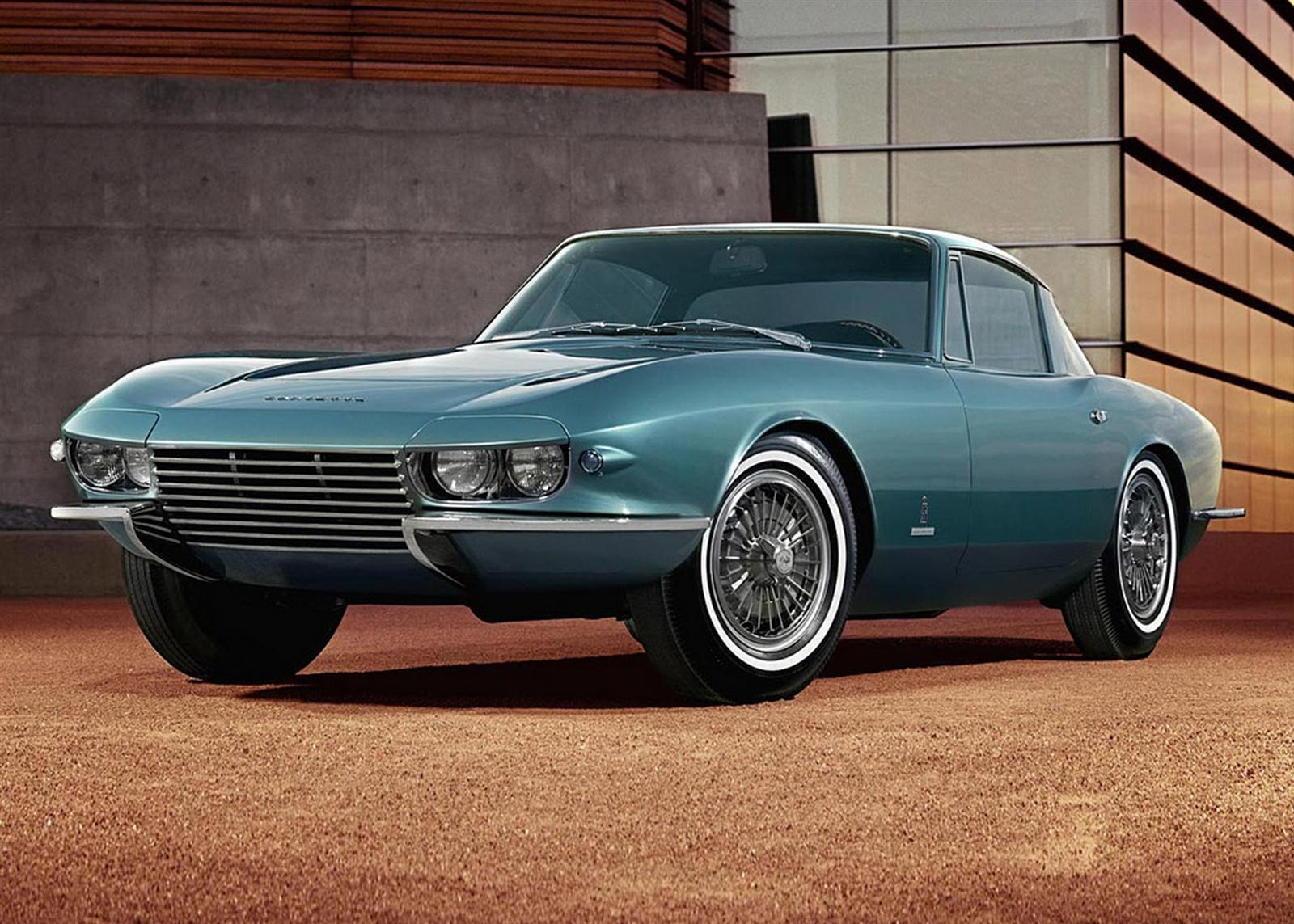
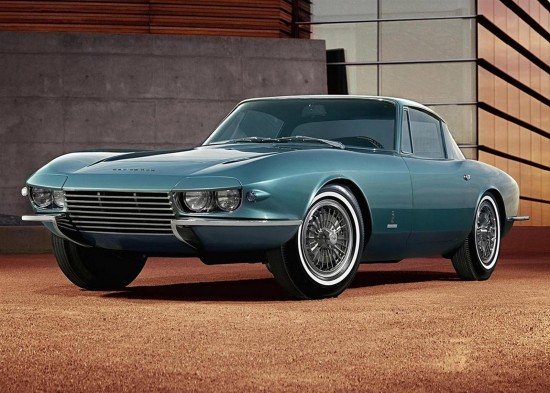
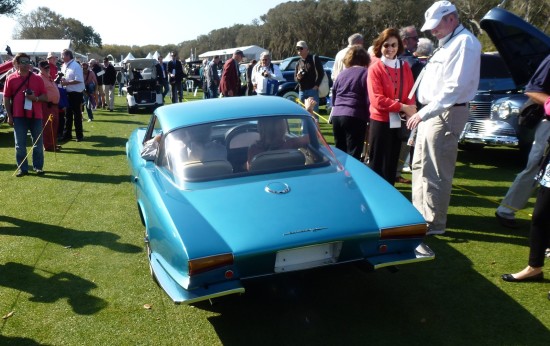
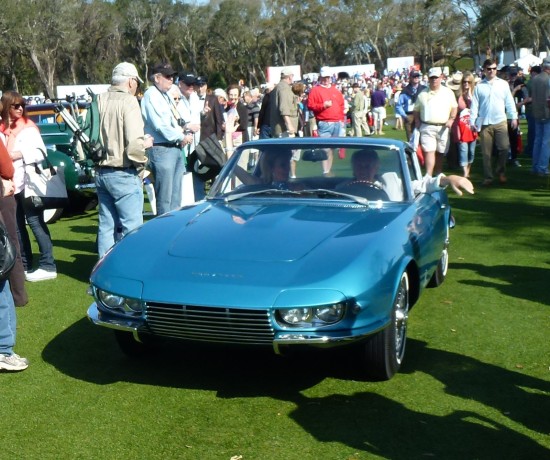

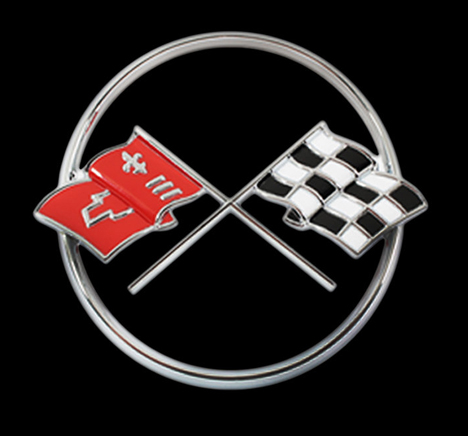
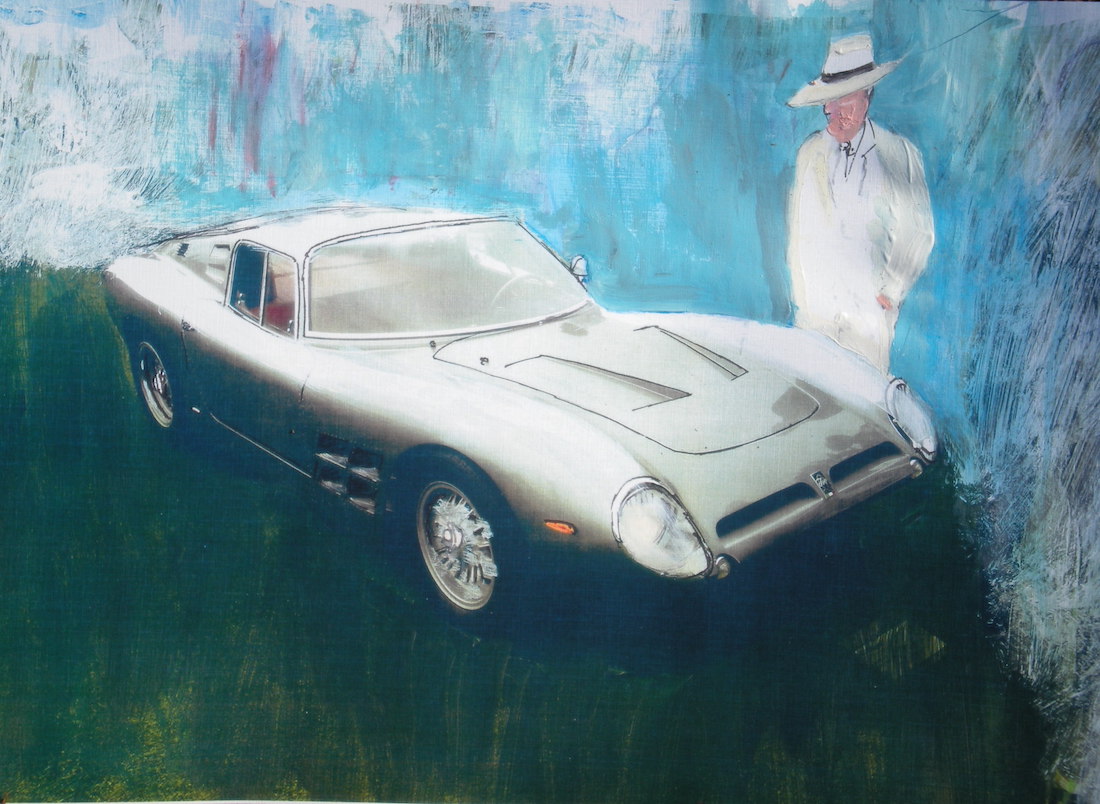

I think despite the fake vents the Corvette Coupe is a much more exciting looking car……
Funny how those “fake” hood vents have appreciated over time.
When a friend and I were looking to restore one back in the’80s the friend found one quite close.
It had a worked on 350 and had the typical front end work/customization done after an accident (typ ’60s) along with the after market 427 hood.
I was looking around the place for some parts and closed a door and found the entire all original hood with the vents. We took that hood very quickly, as even then the vents were hard to get and expensive to boot. Besides we got it very cheap, the whole car that is.We also sold almost anything not nailed down to some people from the local Vett club for very good prices, the entire exhaust, and the quite used seat belts among the parts.
One oddity I noticed was found when I was admiring my fine sanding handiwork was that the split window was not
right, all of a sudden we thought we had been had. Did someone make a ’63 from an early ’64? The numbers did indicate a late ’63 but showed it was a ’63. Turns out that all ’63s were made that way. Next time you look at one, check out that mismatch.
Warning Vett people better not read on.
In finishing the car we spent hours finish sanding and feather filling the body, perhaps 5 finish body sandings to get the babys butt smooth finish, sanded the grind marks from the door sills and elsewhere. Rebuilt the left front fender damaged and repaired by someone who thought that the bondo was for strength when one inch thick, no really.
Whoever rebuilt the front end did us a favor. While I was sanding the nose, again with all that bondo where the headlights were supposed to be. I felt the inside to see just how thick the mud was, lo and behold the buckets and all of the workings were still there. Thanks guy, whoever you were.
For the vett fans brave enough to read on, we removed any and all existing waves and grind marks, I think we created the smoothest ’63 out there, (:)) nope restorers we were not, but fine finishers we were, and all of our cars reflected that.
The Vett people were, apoplectic, horrified, and beside themselves. Saying how could you do that, now you have destroyed its value, those waves and grind marks are a part of a Corvette. Well Que sera sera, we loved it, as now it was beautiful how it’s lines now were more pronounced, and we knew what we did anyway.
This was a personal car, and we never admired the fit and finish of any Vetts new or old, besides the newer materials and underpinings of the later cars helped to greatly reduce cracking found on ALL the older cars
In the end. questionably one of the prettiest (I personally prefer the ’57) cars made here, and a fine car to compare to the E-jags of the era.
Proof of point, both among the most desireable examples of the era, wouldnt you say.
Just my 2 cents.
By the way when it comes to cars, I am a sort of Luddite, outside of the new engine electronics I much prefer the mid ’50s – mid ’60s. so there.